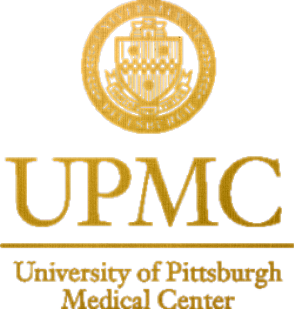
in New York & New Jersey

















Living with sciatica can feel like your body is working against you - every step, twist, or bend triggers pain that radiates from your lower back down your leg.
Whether it’s a sharp jolt, a dull ache, or persistent numbness and tingling, sciatica can interfere with your ability to move, focus, and enjoy the things that matter most. For many, even simple daily activities like sitting, walking, or sleeping become challenging. If you’re suffering from sciatica pain, the Institute of Comprehensive Spine Care is here to provide you with exceptional sciatica treatment options. Led by renowned spine surgeon Gbolahan Okubadejo, MD, FAAOS, our team combines expertise, experience, and cutting-edge techniques to deliver the highest quality care for sciatica. We understand the impact that sciatica can have on your daily life, and our goal is to help you find lasting relief and regain your mobility.
Sciatica is a condition characterized by pain that radiates along the sciatic nerve, which runs from the lower back down through the hips and buttocks to the legs.
It can cause sharp, shooting pain, numbness, tingling, and muscle weakness, making it difficult to perform even the simplest tasks. Sciatica is often caused by a herniated disc, spinal stenosis, bone spurs, or muscle imbalances that put pressure on the sciatic nerve. It can range from mild to severe and may worsen with prolonged sitting, standing, or certain movements.

Sciatica symptoms can vary from person to person, but these are some of the most common symptoms:
Early evaluation is important, not just to confirm the diagnosis but to ensure the underlying cause is properly identified and managed. Left untreated, severe sciatica can lead to long-term nerve irritation or loss of function.
Diagnosing sciatica starts with a conversation about your symptoms - what you're feeling, where it travels, and when it tends to flare up.
During your initial appointment for sciatica treatment NYC & NJ spine surgeon, Dr. Okubadejo, will perform a physical exam to check your reflexes, muscle strength, and how certain movements affect your pain. These small tests help identify whether the sciatic nerve is involved and which part of the spine might be contributing to the problem. Advanced imaging like X-rays, MRI, or CT scans may be used to get a clear picture of what's happening beneath the surface. These tools allow Dr. Okubadejo to pinpoint exactly where the nerve is being compressed - whether by a herniated disc, bone spur, or narrowing of the spinal canal. The goal isn’t just to confirm that it’s sciatica, but to understand why it’s happening, so your treatment plan truly addresses the root of the issue and not just the symptoms.

Because lasting relief depends on addressing the root cause, not just the symptoms, sciatica treatment starts with understanding the source of the nerve irritation.
For most people, the first step involves non-surgical treatments designed to relieve pain, reduce inflammation, and restore function. If your symptoms don’t improve with conservative care - or if nerve compression is severe - surgical treatment may be the next step. Every surgical decision is made with precision and care, and we take time to walk you through what to expect before, during, and after the procedure.
Our non-surgical approaches have a high rate of success, often precluding the need for surgery.
When surgical intervention is necessary, Dr. Okubadejo offers a range of advanced surgical treatments for sciatica, drawing on his extensive expertise to relieve nerve compression safely and effectively.
Patient safety and comfort are our top priorities. We emphasize a well-informed process, ensuring you understand each step of your treatment plan and the expected outcomes.
At The Institute for Comprehensive Spine Care, we believe recovery is just as important as the procedure itself.
That’s why we take a comprehensive, patient-centered approach that continues well after treatment, supporting you every step of the way. Your post-treatment care includes a customized rehabilitation plan designed to promote healing, reduce pain, and restore mobility. We work closely with skilled physical therapists and use proven pain management techniques to help you recover safely and efficiently. From your first follow-up to your full return to daily activities, we’re here to make sure your progress stays on track and your results are long-lasting.
At The Institute for Comprehensive Spine Care, we’re here to help you move past the pain of sciatica with treatment that’s both precise and personalized.
With locations throughout New York and New Jersey, our team is dedicated to providing effective solutions tailored to your individual needs and lifestyle. We begin with a thorough evaluation using advanced diagnostic tools to pinpoint the exact cause and severity of your sciatic nerve pain. This detailed approach allows Dr. Okubadejo to design a treatment plan that’s not only accurate but also aligned with your long-term goals, whether that means getting back to work, exercise, or everyday comfort.
If sciatica is disrupting your life, it doesn’t have to stay that way. Schedule a consultation with us today, and let our skilled, compassionate team guide you toward lasting relief and restored quality of life.
Dr. Okubadejo has hundreds of 5-star reviews.
Patients consistently praise Dr. Okubadejo for his attentive listening, clear communication, and exceptional surgical outcomes.
★★★★★






The most common symptoms of sciatica include sharp or shooting pain in the lower back, buttocks, and legs, numbness or a tingling sensation in the affected areas, muscle weakness, and difficulty in moving the leg or foot.
Sciatica is commonly caused by a herniated disc, which occurs when the soft inner core of a spinal disc protrudes through the outer layer and presses on the nearby nerve roots. Other causes may include spinal stenosis, degenerative disc disease, spondylolisthesis, or rarely, tumors or infections.
The duration of sciatica varies depending on the underlying cause and individual factors. In many cases, symptoms improve within a few weeks or months with conservative treatments. However, some cases may persist for longer periods, requiring further evaluation and treatment.
While it may not be possible to prevent all cases of sciatica, certain measures can help reduce the risk. Maintaining good posture, practicing regular exercise to strengthen the core and back muscles, using proper lifting techniques, and avoiding prolonged sitting or standing can contribute to spine health and reduce the risk of sciatica.
In most cases, it is advisable to stay active and continue with gentle exercises and activities that do not exacerbate pain. Physical therapy exercises and stretches specifically designed for sciatica treatment can help relieve symptoms and improve flexibility and strength. However, it is important to consult with a healthcare professional for guidance on appropriate exercises and activity levels based on your specific condition.
Sciatica can recur, especially if the underlying cause is not effectively addressed or if there are predisposing factors, such as degenerative changes in the spine. However, with appropriate treatment and preventive measures, the risk of recurrent episodes can be minimized.


